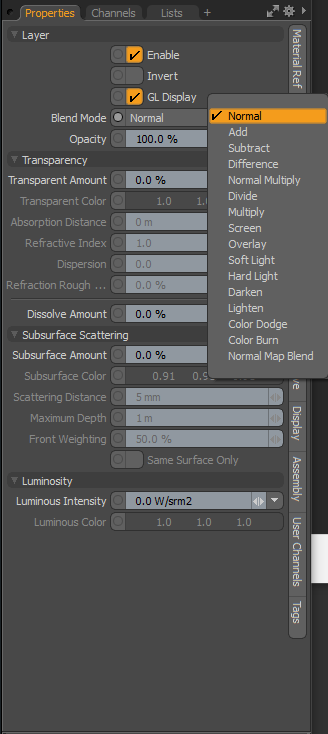
- #LAYER MODE IN LOGOIST 3 HOW TO#
- #LAYER MODE IN LOGOIST 3 FULL#
- #LAYER MODE IN LOGOIST 3 FREE#
- #LAYER MODE IN LOGOIST 3 MAC#
In addition to logos, the program has “take-you-by-the-hand” presets for greeting cards, business cards, simple logos, and photos. Any of the automatically generated 1-2-3 logos can be edited further. 1-2-3 logos can be displayed with auto-generated color variations. Here the user entered a minimum of information to generate dozens of variations. The 1-2-3 Logo option is the easiest, fastest way to create a large variety of logos. Selecting one of the auto-generated logos presents another scrollable screen with that logo shown in dozens of color variations and backgrounds. The 1-2-3 Logo! option requires the minimum possible effort to create a gallery of designs from simply inputting a name or initials, along with an optional tagline, and instantly produces dozens of logos in categories such as frames, futuristic, stacked, font effects, emphasized letters, large initials, expanded characters, checkerboard, letter effects, initials, decorations, and symbols. This simple bitmap image of a cat is being converted to a vector format image using a variety of user-specified settings. The program also provides a built-in Vectorize feature, to convert bitmap images directly into vector format, acquiring all of the benefits of the vector format.
#LAYER MODE IN LOGOIST 3 FREE#
This means that vector-based line art prints smoothly, free of jagged edges, whether printed on a business card or a billboard.
#LAYER MODE IN LOGOIST 3 FULL#
An important characteristic of vector graphics is that because they are mathematically based, they print at the full resolution of the output device. Each vector image is usually constructed of two or more objects, which, although combined to form new and more complex images, maintain their individual identities so that they can be modified independently. Within the computer a vector image is composed of line segments that are defined in mathematical terms, with trajectory coordinates. Each element that composes a template is a vector, independently editable, and resizable without distortion or pixilation. The Showcase provides dozens of templates that serve as starting points and inspired ideas for creating a logo.

The start-up screen presents multiple starting points, beginning with the Showcase.

Click OK to proceed the switch will reboot.Logoist 4 for Macintosh is the best low-priced logo design application we have seen, and has a generous set of easy-to-use features for those who are inexperienced, but need to produce a presentable logo quickly. A pop-up window will appear warning that changing the system mode will cause the switch to automatically reboot itself, and erase the startup configuration file in process. Layer 3 (Network) adds a level of intelligence usually found in routers and the ability to route data using IP addresses.
#LAYER MODE IN LOGOIST 3 MAC#
Note: Layer 2 (Data-Link) forwards data based on MAC addresses.

In the System Mode field, select either the L2 or 元 radio button to select which mode the switch will run in. Log into the web configuration utility and choose Administration > System Settings.
#LAYER MODE IN LOGOIST 3 HOW TO#
The objective of this document is to show you how to enable Layer 3 Mode on the SF/SG 300 Series Managed Switch using the graphical user interface (GUI) and command line interface (CLI). If you would like to know more about the Layer 3 switch evolution, click here. A switch operating in Layer 3 mode has low latency, and can be a replacement for other routers with similar throughput. In Layer 3 mode, the switch analyzes only the IP header segment of a frame using hardware, as opposed to a router analyzing the entire packet with software. In this mode, the switch uses hardware to make forwarding decisions based on the MAC address information in a frame. By default, the SF/SG 300 Series Managed Switch operates in Layer 2 mode.


 0 kommentar(er)
0 kommentar(er)
